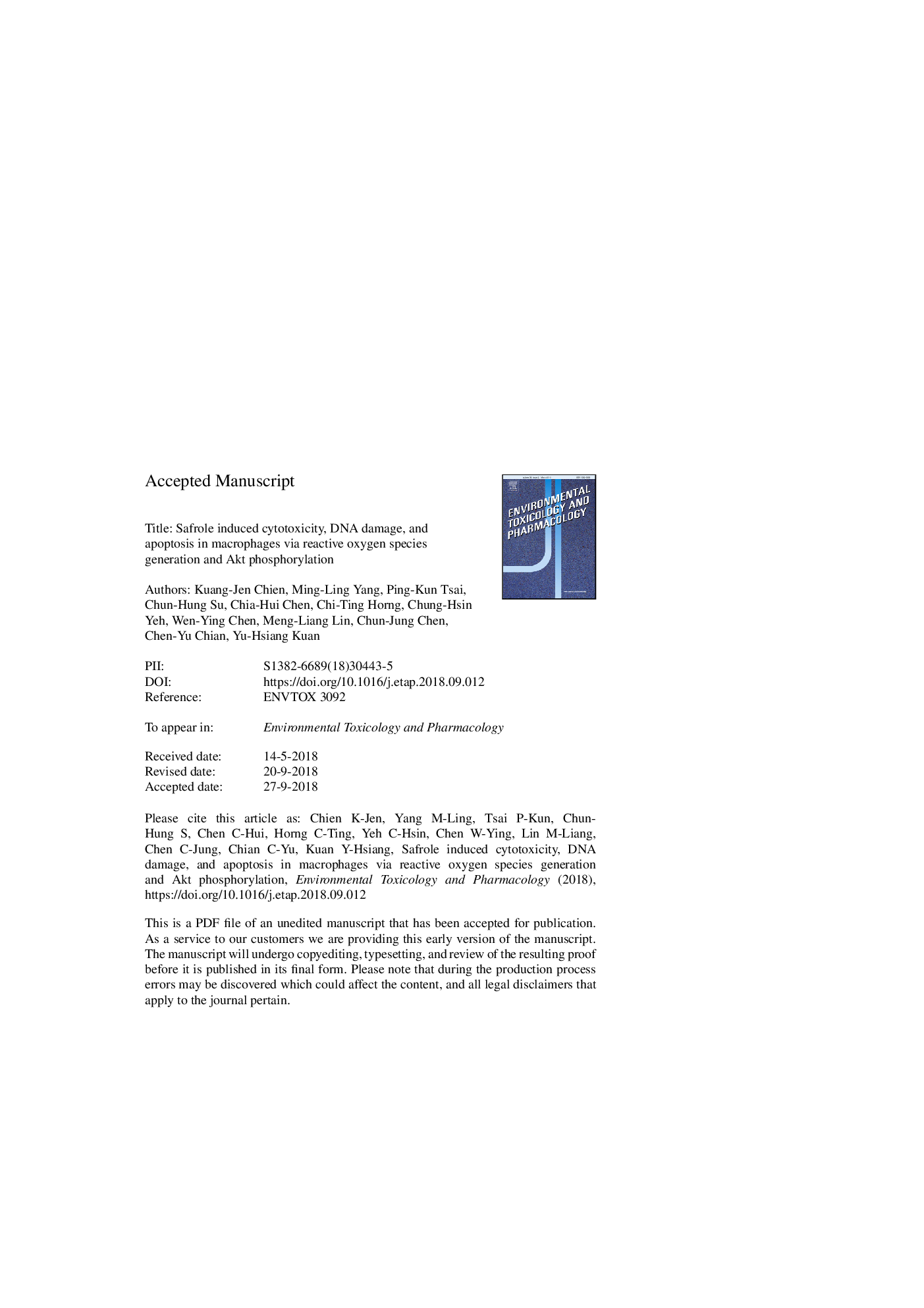| Article ID | Journal | Published Year | Pages | File Type |
|---|---|---|---|---|
| 11023043 | Environmental Toxicology and Pharmacology | 2018 | 27 Pages |
Abstract
Safrole is a natural compound categorized as a group 2B carcinogen extracted from betel quid chewing, which is a common practice of psychoactive habits integrated into social and cultural ceremonies among serveral million people, especially in Southern or Southeastern Asia. Safrole is one of the major risk compunds for development of oral squamous cell carcinoma and hepatocellular carcinoma via DNA adduction. In innate immunity, macrophages are the predominant cells for non-specific first line defense against pathogens in oral tissue. Up to now, there is no evidence to implicate the potential toxicological effect of safrole on macrophages. In this study, we found safrole induced the generation of reactive oxygen species (ROS) and myeloperoxidase (MPO) in RAW264.7 macrophages in a concentration-dependent manner. Furthermore, cytotoxicity, DNA damage, and apoptosis were caused by safrole in a concentration-dependent manner. While the activation of antioxidative enzymes superoxide dismutase (SOD) and glutathione peroxidase (GPx) was reduced, the phosphorylation of Akt was induced by safrole in a concentration-dependent manner. These results indicated that the induction of cytotoxicity, DNA damage, and apoptosis in macrophages by safrole was through generation of ROS and inhibition of antioxidative enzymes possibly via Akt phosphorylation.
Related Topics
Life Sciences
Environmental Science
Health, Toxicology and Mutagenesis
Authors
Kuang-Jen Chien, Ming-Ling Yang, Ping-Kun Tsai, Chun-Hung Su, Chia-Hui Chen, Chi-Ting Horng, Chung-Hsin Yeh, Wen-Ying Chen, Meng-Liang Lin, Chun-Jung Chen, Chen-Yu Chian, Yu-Hsiang Kuan,
